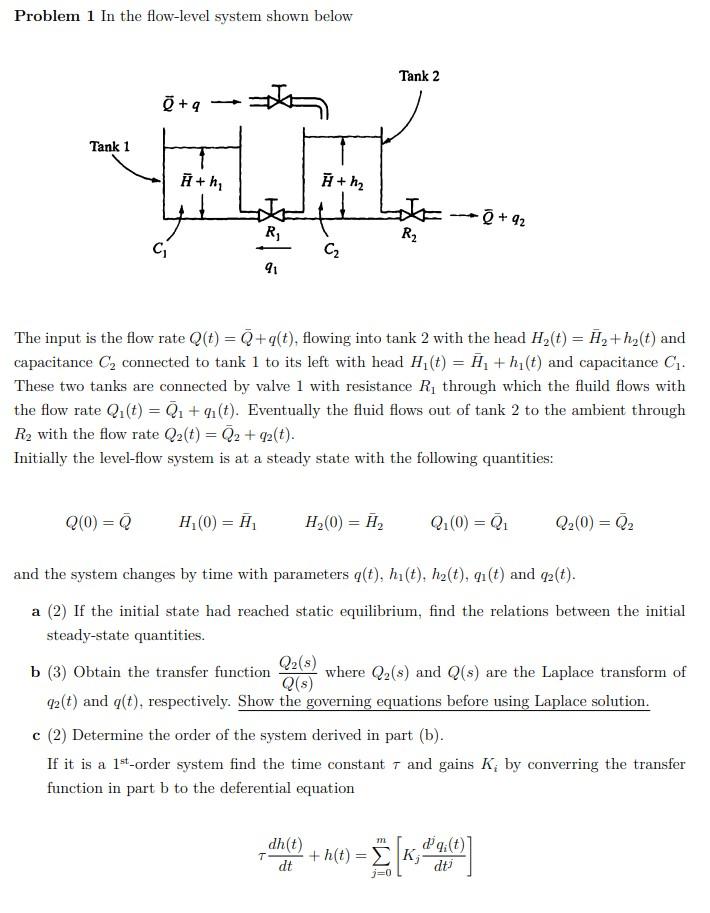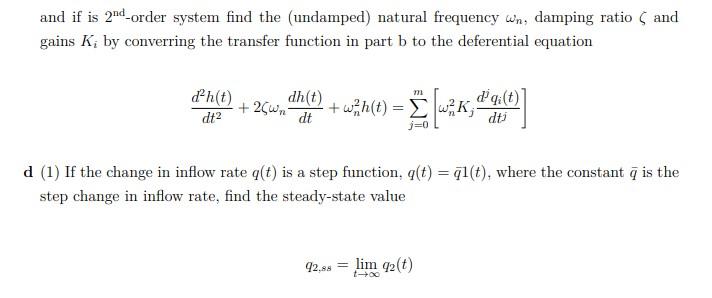Home /
Expert Answers /
Mechanical Engineering /
problem-1-in-the-flow-level-system-shown-below-the-input-is-the-flow-rate-q-t-q-q-t-flow-pa840
(Solved): Problem 1 In the flow-level system shown below The input is the flow rate Q(t)=Q+q(t), flow ...
Problem 1 In the flow-level system shown below The input is the flow rate , flowing into tank 2 with the head and capacitance connected to tank 1 to its left with head and capacitance . These two tanks are connected by valve 1 with resistance through which the fluild flows with the flow rate . Eventually the fluid flows out of tank 2 to the ambient through with the flow rate . Initially the level-flow system is at a steady state with the following quantities: and the system changes by time with parameters and . a (2) If the initial state had reached static equilibrium, find the relations between the initial steady-state quantities. b (3) Obtain the transfer function where and are the Laplace transform of and , respectively. Show the governing equations before using Laplace solution. c (2) Determine the order of the system derived in part (b). If it is a -order system find the time constant and gains by converring the transfer function in part to the deferential equation
and if is -order system find the (undamped) natural frequency , damping ratio and gains by converring the transfer function in part b to the deferential equation d (1) If the change in inflow rate is a step function, , where the constant is the step change in inflow rate, find the steady-state value

